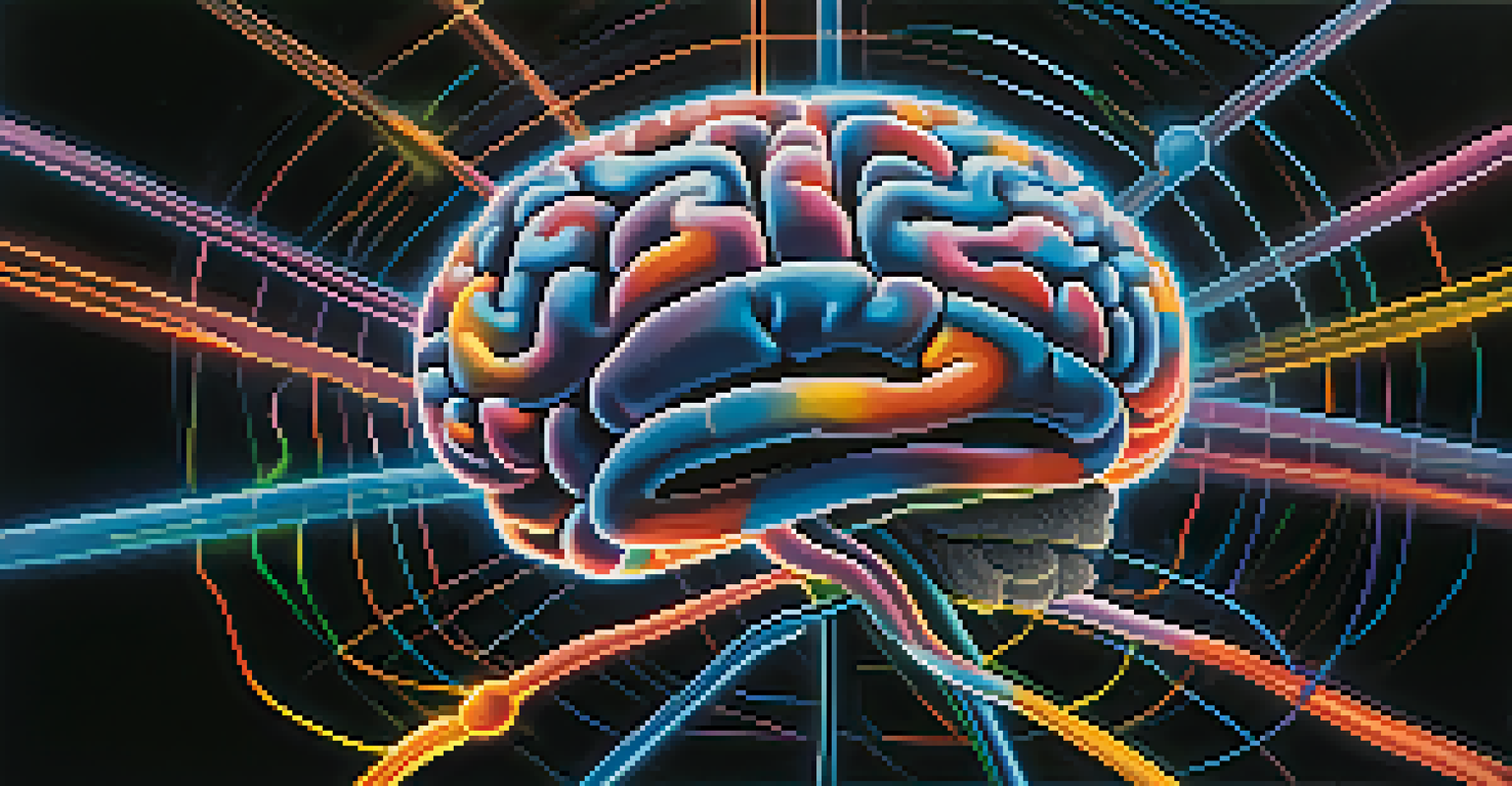Psychological Effects of Entheogens on Pain Perception

Understanding Entheogens and Their Use in Pain Management
Entheogens are substances, often derived from plants, that are used in spiritual or therapeutic contexts. They are known for their ability to alter perception, consciousness, and emotional states. Traditionally, these substances have been utilized in rituals to facilitate healing and connection with deeper aspects of the self.
The use of entheogens in therapeutic contexts opens new pathways for pain management, allowing individuals to explore the depths of their consciousness and transform their experience of pain.
In pain management, entheogens are gaining attention for their potential to shift how individuals experience and interpret pain. This shift can lead to reduced reliance on conventional pain medications, which often come with undesirable side effects. By engaging with entheogens, users may find they can manage pain more effectively and holistically.
One of the key elements in understanding the impact of entheogens on pain perception is the psychological component. Pain is not merely a physical sensation; it's also influenced by emotional and cognitive factors. Therefore, the potential for entheogens to alter these psychological states could be a game changer in pain treatment.
The Role of Neurotransmitters in Pain Perception
Neurotransmitters are chemicals in the brain that transmit signals between nerve cells and play a vital role in how we perceive pain. Substances like serotonin and dopamine can significantly influence our emotional and physical experience of pain. Entheogens are known to affect the levels of these neurotransmitters, which can lead to changes in pain perception.

For instance, many entheogens have been shown to increase serotonin levels, which can elevate mood and reduce the perception of pain. This is particularly beneficial for individuals suffering from chronic pain conditions, where pain perception can be heightened due to psychological distress. By modulating these neurotransmitter systems, entheogens may provide a unique avenue for pain relief.
Entheogens Aid Pain Management
Entheogens can help shift pain perception, potentially reducing the need for conventional pain medications.
Additionally, the interaction between neurotransmitters and the brain’s pain pathways suggests that entheogens could help disrupt the cycle of pain and emotional suffering. This offers a more integrated approach to pain management, where the psychological and physical aspects are addressed simultaneously.
Entheogens and the Altered State of Consciousness
One of the most significant effects of entheogens is their ability to induce altered states of consciousness. These experiences can range from profound insights to deep emotional releases, which can alter an individual’s relationship with pain. In an altered state, the brain processes pain differently, often reducing its intensity or significance.
Psychedelics can help us confront our pain and suffering, potentially leading to profound healing and a redefinition of our relationship with discomfort.
For example, during an entheogenic experience, some individuals report feeling a sense of detachment from their physical body. This detachment can lead to a diminished experience of pain, allowing individuals to confront and process their pain in new ways. These insights can be transformative, leading to lasting changes in how one perceives pain even after the experience has ended.
Moreover, the therapeutic setting in which entheogens are often administered can enhance these effects. A supportive environment can foster trust and safety, enabling individuals to explore their pain and emotional wounds without fear. This holistic approach can lead to breakthroughs in pain management that are difficult to achieve through traditional methods.
The Psychological Benefits of Entheogen Use
Beyond the immediate effects on pain perception, entheogens can provide various psychological benefits that contribute to overall well-being. Many users report enhanced emotional resilience, improved mood, and a greater sense of connectedness to others and themselves. These benefits can create a more positive mindset, which in turn can further reduce the perception of pain.
For those grappling with chronic pain, feelings of isolation and despair can exacerbate their condition. Entheogens, through their capacity to foster connection, can help mitigate these feelings, leading to a more holistic healing process. When individuals feel supported and connected, their experience of pain can shift towards acceptance rather than suffering.
Neurotransmitters Influence Pain
Entheogens affect neurotransmitter levels, such as serotonin, which can alter the emotional and physical experience of pain.
Additionally, the introspective nature of entheogenic experiences can lead to greater self-awareness. This self-awareness can empower individuals to make lifestyle changes that promote pain relief, such as better stress management techniques or healthier habits. Ultimately, this psychological transformation can be as crucial as the physical aspects of pain management.
Research and Evidence Supporting Entheogen Use
While anecdotal evidence abounds regarding the benefits of entheogens in pain perception, scientific research is beginning to catch up. Studies have shown promising results, indicating that substances like psilocybin and ayahuasca can significantly reduce pain and improve quality of life for patients with chronic conditions. However, more rigorous research is needed to fully understand their efficacy and safety.
Research into the psychological effects of entheogens is also expanding. Clinical trials are exploring how these substances can be integrated into therapeutic settings, particularly for conditions like PTSD and anxiety, which often accompany chronic pain. The preliminary findings suggest that entheogens could play a vital role in addressing the psychological aspects of pain perception.
Despite the challenges of conducting research in this area, the growing body of evidence highlights the need for a paradigm shift in how we approach pain management. As more studies emerge, the potential for entheogens to be recognized as valuable tools in pain perception and treatment becomes increasingly likely.
Challenges and Considerations in Using Entheogens
While the potential benefits of entheogens are exciting, there are challenges and considerations that must be addressed. First and foremost, the legality and accessibility of these substances can vary widely, making them difficult for many individuals to obtain. Furthermore, the quality and purity of entheogenic substances can fluctuate, which can impact their safety and efficacy.
Another concern is the psychological effects that may not be beneficial for everyone. For some individuals, entheogen use can lead to overwhelming experiences or exacerbate underlying mental health issues. This underscores the importance of professional guidance and support when exploring entheogens for pain perception.
Research Supports Entheogen Use
Growing scientific research suggests that entheogens like psilocybin and ayahuasca may significantly improve pain relief and quality of life.
Finally, integrating entheogens into mainstream pain management practices requires a shift in mindset among healthcare providers. As we continue to explore the therapeutic potential of these substances, ongoing education and open dialogue will be essential to ensure safe and effective use.
The Future of Entheogens in Pain Perception
As our understanding of the psychological effects of entheogens deepens, the future looks promising for their role in pain perception. Ongoing research and clinical trials are likely to pave the way for new treatments that incorporate these substances into holistic pain management strategies. This could lead to a more comprehensive approach to addressing both the physical and psychological aspects of pain.
Additionally, as societal perceptions of entheogens shift, we may see increased acceptance and integration into therapeutic practices. This could involve training healthcare professionals to use entheogens responsibly and effectively, ensuring that patients receive the best possible care. The potential for entheogens to revolutionize pain management is vast, but it will require collaboration across various fields.

Ultimately, embracing entheogens as a legitimate tool in pain perception can lead to transformative changes in how we approach pain. By combining traditional medical practices with these ancient substances, we can create a more compassionate and effective healthcare landscape that addresses the complexities of human experience.